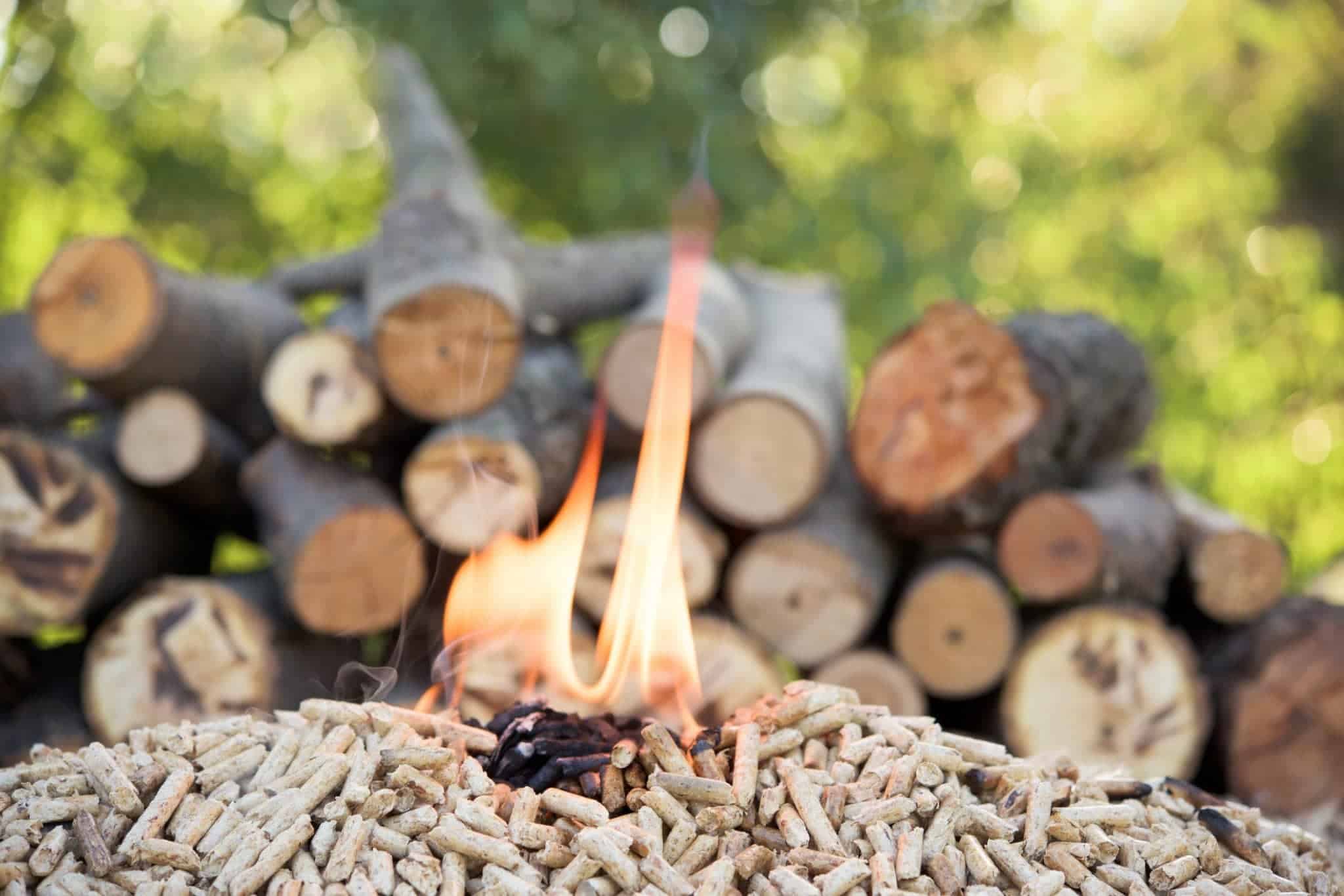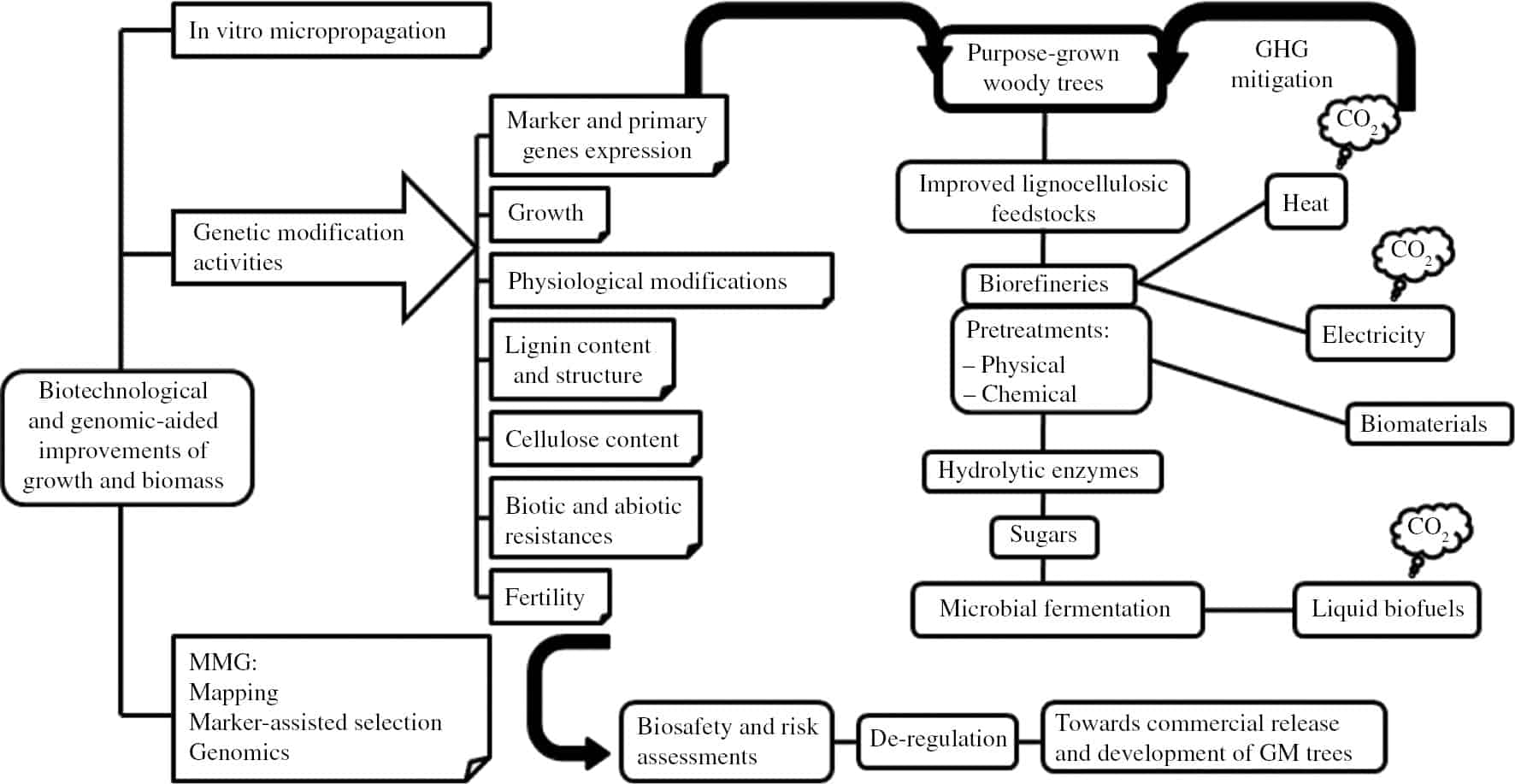Biotechnological enhancement of fast-growing trees as a renewable bioenergy biomass
To meet our rapidly-increasing energy demands, biotechnological improvements of short-rotation and purpose-grown woody crops as biomass could soon be part of the global renewable energy solution. This would also engage in mitigating global climate change, decreasing the challenge of food and energy security, and resolving the conflict between land use for food or biofuel production.
As the world’s population continues to expand, the energy requirements become more complicated. Unless renewable and sustainable alternative sources are developed, this will lead to fossil fuel shortages.
Bioenergy is a renewable energy derived from biological materials that can be converted by biological, mechanical or thermochemical processes into useful energy sources to produce heat, generate electricity and provide liquid biofuels (bioethanol and biodiesel) for the transport industry.

In his review article published in the journal Zeitschrift für Naturforschung C, the author compiled existing knowledge on woody biomass obtained from purpose-grown and fast-growing trees with potential coppicing systems. Biomass sourced from these trees e.g. poplar, willows (Salix), eucalyptus species, and their relevant hybrids, is a promising feedstock for bioenergy applications considering its great availability, especially in geographical regions where commercial short-rotation plantation is feasible.
Forest biotechnology and genomics include modern tools and methods and their applications in forest science, including, tree genetic engineering, and technologies for locating, identifying, comparing or otherwise manipulating novel genes. In addition, advancements in tree cell and tissue culture techniques allow vegetative multiplication as well as regeneration of genetically-modified (GMO) targeted trees under laboratory artificial conditions.
GMO trees qualified for commercial plantations can be designed to maximize their bioenergy potential by producing higher stem biomass for energy use and have better wood chemical properties suitable for subsequent processing and conversion into bioethanol. They can be transformed with novel transgenes that enhance tree growth rate and yield, wood quality, growing-site adaptability, and tolerances to natural biotic stresses (e.g. insect pests-resistance) and abiotic stresses (e.g. frost-tolerance).

Wood consists mainly of cellulose, hemicellulose and lignin. The interactions between these biopolymers, and specifically the recalcitrant nature of lignin hinder hydrolytic enzymes accessibility, and microbial and chemical deconstruction of wood into simple sugars needed for subsequent microbial fermentation into liquid ethanol (bioethanol).
Promising studies resulted in alteration of lignin/cellulose/hemicelluloses ratio, as well as lignin content and composition, will pave the way to simplify the process of wood biomass-to-ethanol conversion.
Finally, GMO trees still need to pass challengeable regulatory authorities’ processes, including biosafety and risk assessment analyses prior to their commercialization release. Several failsafe strategies to contain transgenes within transgenic trees, or to mitigate potential transgene-flow risks to non-transgenics, are developed and well described in the published literature.
Biotech improvements are necessary to make purpose-grown trees a sustainable and economical feedstock option for efficient bioconversion of woody biomass into bioethanol and other energy applications.
Read the original article here